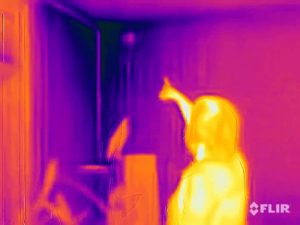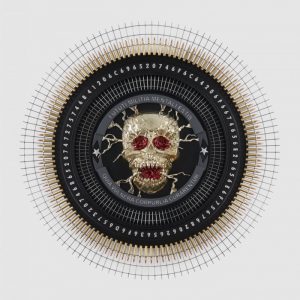Yumiko Tanaka designs tools to connect children and parents at home. Adults and kids live in their own worlds despite the fact that they are living in the same space.
Plable features a perfectly normal tabletop and can be used by adults as such but its underside is a “playground,” a secret place for children.
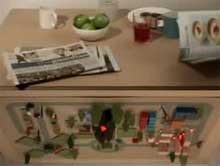
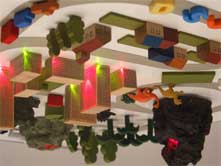
They can build their own imaginary world on the underside of the table with opposite gravity. The movement that happens on the tabletop triggers the happenings on the underside. For example as light is set on the table top, night falls on its underside; when an object like a a newspaper is placed on the table, a hill forms on the other side; everyday tableware like a cup will cause traffic to flow on the roundabout; some objects placed on particular part of the table will make the pteranodon fly; the more elements placed on the table, the more the underworld will be animated.
Adults can show children some exciting tricks and do their own things at the same time. It also might help children and adults to play together more often through their normal activities in the everyday environment. Video.
Kind of made me think of one of the new applications of Mediamatic‘s RFID’d Symbolic Table. Willem Velthoven explained me yesterday how it works. Children are invited to throw dice on the table (nicely covered with blackboard paint). According to the side of the dice that falls on the table and the place where it lands, a different sound will be played (Images on flickr: first three are the dice table, the others pictures show plastic animals interacting with the table.)
Back to Tanaka’s “Designing tools to connect generations at home” project. The designer also imagined Fripon, a pair of devices wirelessly connected to each other. One of the devices is set into a standard kitchen equipment, the other is set into a children’s toy. Using the kitchen equipment suddenly makes the toy lively. For example, when a parent opens a kitchen cupboard, a soft toy rabbit raises its hand. When a parent turns on a kettle, a toy car starts to run.
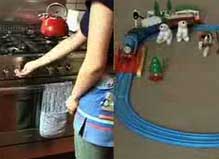
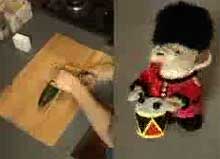
These connections gives children and parents a chance to wonder what each other are doing. Even if they engage in different things in different rooms, they can feel as if they are sharing times through the ordinal objects.
Yumiko Tanaka is a graduate student from Interaction Design at the Royal College of Art in London, go and have a look at their graduation works if you’re in town. The RCA show just opened and will run until July 2. Will cover it when i’m in London next week.



